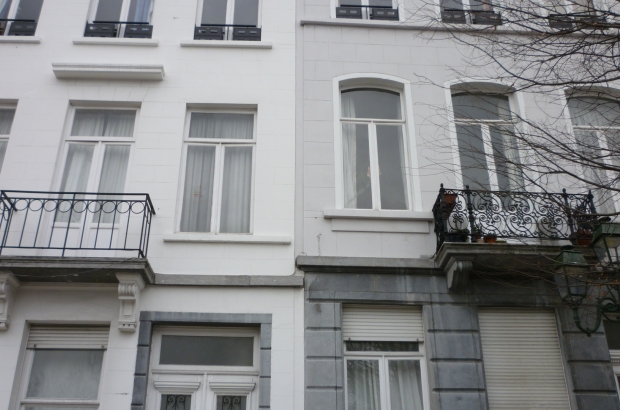- Daily & Weekly newsletters
- Buy & download The Bulletin
- Comment on our articles
Danger above: the balconies of Brussels
I have always liked balconies, and when I lived in New York and didn’t have one I envied all those tens of thousands of people who did. Not that they ever so much as stepped out on them to survey the city below. Most of those narrow waist-high projections lacked even a flower pot, much less a table and chairs.
Acrophobia, someone has helpfully explained. Maybe, but is it really that common; do that many apartment-dwellers suffer from it? If skyscraper-induced fear of heights is what keeps New Yorkers from venturing out onto that little perch above the abyss, how do you explain the reluctance of Belgians in their average four-storey houses to enjoy their often very elegantly designed balconies? The object of a balcony, after all, is to provide the high-rise tenant with a place and opportunity to pace up and down in the fresh air and sunshine (if any) without taking the trouble to go down by elevator or several flights of stairs to terra firma. So then why do so many low-rise houses in Brussels have balconies at all on the first or second floors?
One answer is the old canard that Brussels slavishly copies French fashions, so when Baron Haussmann (1809-1891), the wreckerbuilder of modern Paris, laid out his boulevards with tall apartment buildings decorated with handsome wrought-iron balconies, the property developers in Brussels soon followed suit, never for a moment noticing that it was silly to have a balcony only a quick hop down the steps to the pavement.
Now you may say that I am generalising wildly, that you have seen plenty of people in Brussels happily promenading or relaxing with a book or a beer on their balconies. All right, yes, I am generalising, but so do we all, basing our guesses on scant evidence. But all I want to do is encourage everyone with access to a balcony to make better, more frequent use of it, to plant flowers or fly flags or, as one of my neighbours used to do, hang a canary in its gilded cage from a hook on the railing to sing for the entertainment of the entire quartier.
But there is, I have to admit, a problem. A man who knows far more than most of us about balconies, Alexandre Horion, testifies that a good 30 percent of the ones in Brussels are simply not safe. Interviewed by La Capitale, Horion, a specialist in balcony repair, described a walking tour of the city he had recently taken which filled him with serious alarm. Gazing up to the right and left he spotted balcony after balcony where parts of the railings were either critically rusted, broken or missing altogether.
Horion is worried not only about the people, children especially, who might fall from these dilapidated structures, but about uspedestrians strolling along below when they come tumbling down. The risk should not be ignored, but it is. Horion has sometimes felt compelled to ring a doorbell and inform the owners of the danger their rickety balcony poses. Far from thanking him for his friendly warning, they abruptly send him on his way.
True, there is always the question of expense. Replacing one of those traditional cast-iron railings can cost as much as €2,000. In the wealthier, more tourist-oriented parts of town – the Sablon, for example – the balconies are all in good shape. But not that much farther downtown, on the Boulevard Anspach, Horion finds much to complain about. He’s especially outraged by the indifference of owners or tenants to care what the balconies are made of or whether one of them matches another on the façade of the same building. This esthetic disparity is an offense to his well-trained eye.
All of the more artistically elaborate balconies are made out of cast-iron or fonte; the disgraceful ones that Horion and I think should, ideally, be banned altogether are either straight rods of iron or else strips of aluminium or plastic. He would urge the city or commune to provide subsidies for anyone willing to repair a faulty balcony or to fine anyone who repeatedly ignores formal reminders that the menace is real. And then, of course, there’s always us: we vigilant citizens who have the right to lodge a complaint with the communal authorities.
I could go on, but I won’t. I could talk about all those historical balconies from which emperors, popes and politicians have, from time immemorial, harangued the hoi polloi. And we mustn’t forget Juliet Capulet’s notorious balcony in Verona. Not to mention our very own town hall balcony in the Grand’Place where the victorious Allied leaders and, later, champion football players and bicycle riders have inspired jubilation in the cheering crowds below.
If the balconies of Brussels are rightly used, it doesn’t much matter what for. If you’re lucky enough to have one, you might spend a few creative moments just looking out over your corner of the city and thinking about it as positively as possible.


















